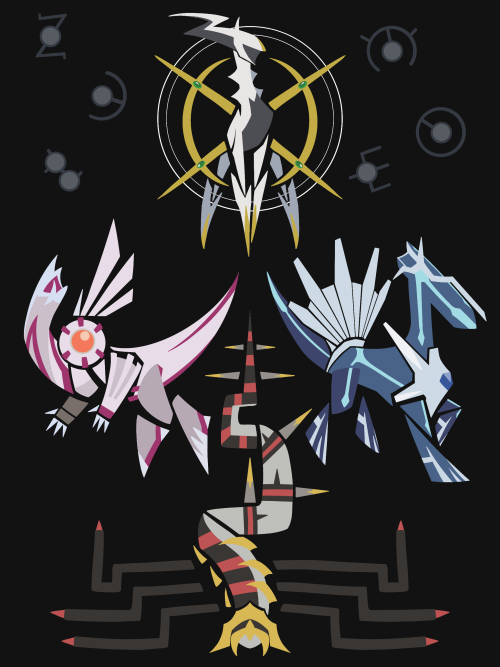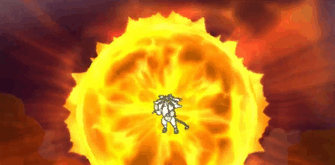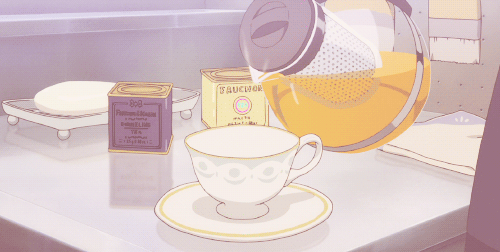It’s An Old Memory.

It’s an old memory.
More Posts from Bunnywitch2020 and Others

I had to paint this gorgeous beast! Look how cute! Look how fluffy! Look at that sun devouring lion! ; v ; * Commissions || Twitter *





Solgaleo - Sunsteel Strike
Galactic Ghouls and Stellar Screams
A quiet, starry night sky might not seem like a very eerie spectacle, but space can be a creepy place! Monsters lurk in the shadowy depths of the universe, sometimes hidden in plain sight. Many of them are invisible to our eyes, so we have to use special telescopes to see them. Read on to discover some of these strange cosmic beasts, but beware — sometimes fact is scarier than fiction.
Monster Black Holes ⚫

You know those nightmares where no matter how fast you try to run you never seem to get anywhere? Black holes are a sinister possible version of that dream — especially because they’re real! If you get too close to a black hole, there is no possibility of escape.
Just last year our Fermi Gamma-ray Space Telescope traced an otherworldly ghost particle back to one of these monster black holes, providing additional insight into the many signals we’re picking up from some of the most feared creatures in the cosmic deep.
But it gets worse. Our Hubble Space Telescope revealed that these things are hidden in the hearts of nearly every galaxy in the universe. That means supermassive black holes lurk in the shadows of the night sky in every direction you look!
A Hazy Specter 👻

This fiendish specter lives in the center of the Milky Way, haunting our galaxy’s supermassive black hole. But it’s not as scary as it looks! Our SOFIA observatory captured streamlines tracing a magnetic field that appears to be luring most of the material quietly into orbit around the black hole. In other galaxies, magnetic fields seem to be feeding material into hungry black holes — beware! Magnetic fields might be the answer to why some black holes are starving while others are feasting.
Bats in the Belfry 🦇

The universe has bats in the attic! Hubble spotted the shadow of a giant cosmic bat in the Serpens Nebula. Newborn stars like the one at the center of the bat, called HBC 672, are surrounded by disks of material, which are hard to study directly. The shadows they cast, like the bat, can clue scientists in on things like the disk’s size and density. Our solar system formed from the same type of disk of material, but we can only see the end result of planet building here — we want to learn more about the process!
Jack-o-lantern Sun 🎃

A jack-o-lantern in space?! Our Solar Dynamics Observatory watches the Sun at all times, keeping a close eye on space weather. In October 2014, the observatory captured a chilling image of the Sun with a Halloweenish face!
Skull Comet 💀

On Halloween a few years ago, an eerie-looking object known as 2015 TB145 sped across the night sky. Scientists observing it with our Infrared Telescope Facility determined that it was most likely a dead comet. It’s important to study objects like comets and asteroids because they’re dangerous if they cross Earth’s path — just ask the dinosaurs!
Halloween Treat 🍬

Trick-or-treat! Add a piece of glowing cosmic candy to your Halloween haul, courtesy of Hubble! This image shows the Saturn Nebula, formed from the outer layers ejected by a dying star, destined to be recycled into later generations of stars and planets. Our Sun will experience a similar fate in around five billion years.
Witch’s Broom Nebula 🧹

Massive stars are in for a more fiery fate, as the Witch’s Broom Nebula shows. Hubble’s close-up look reveals wisps of gas — shrapnel leftover from a supernova explosion. Astronomers believe that a couple of supernovae occur each century in galaxies like our own Milky Way.
Zombie Stars 🧟

Supernovae usually herald the death of a star, but on a few occasions astronomers have found “zombie stars” left behind after unusually weak supernovae. Our Nuclear Spectroscopic Telescope Array (NuSTAR) has even spotted a mysterious glow of high-energy X-rays that could be the “howls” of dead stars as they feed on their neighbors.
Intergalactic Ghost Towns 🏚️

The universe is brimming with galaxies, but it’s also speckled with some enormous empty pockets of space, too. These giant ghost towns, called voids, may be some of the largest things in the cosmos, and since the universe is expanding, galaxies are racing even farther away from each other all the time! Be grateful for your place in space — the shadowy patches of the universe are dreadful lonely scenes.
Mysterious Invisible Force 🕵️♀️

Some forces are a lot creepier than floorboards creaking or a door slamming shut unexpectedly when you’re home alone. Dark energy is a mysterious antigravity pressure that our Wide Field Infrared Survey Telescope (WFIRST) is going to help us understand. All we know so far is that it’s present everywhere in the cosmos (even in the room with you as you read this) and it controls the fate of the universe, but WFIRST will study hundreds of millions of galaxies to figure out just what dark energy is up to.
Want to learn some fun ways to celebrate Halloween in (NASA) style? Check out this link!
Make sure to follow us on Tumblr for your regular dose of space: http://nasa.tumblr.com
💫🌟Star Magick Guide🌟💫
When the day’s light has vanished

I am a solar witch by nature, and I feel like a lot of people don’t understand the protection the sun gives us. The sun is the most dynamic and powerful energy source known to us, hands down. All cosmic light comes from her. Yes, even the moon gets its light from the sun, though most people, myself included, consider the moon a separate entity. I’ve never been attacked or had any negative energy dare come near me in full sunlight. She is powerful and she does not leave.
So, instead of disappearing at night, she simply goes into another form. This is the time solar energy transforms from the singular yellow sun to the more cosmic power of the stars. This is the time when the colder fire of the universe is visible. Starlight is the most mysterious part of solar magick, one that’s softer and comforting, yet incomprehensible.
Tips!
⭐️ The more stars you can see, the more powerful your spells!
⭐️ If it’s the time of year a certain constellation is visible, you can focus on spells regarding that zodiac or deity
⭐️ August is one of the best months for meteor showers
⭐️ Star water is a thing! It can be affected by whatever constellation you set it under as well
⭐️ Individual stars can also have different spells attached to them (i.e. the morning star, the north star, etc)
⭐️ All crystals are safe to charge under starlight
Spells!
⭐️ Secret magick
⭐️ Cerebral magick
⭐️ Questions about other beings or entities
⭐️ Divination
⭐️ Spells about our purpose as a being on this plane of existence
⭐️ Spells about our purpose as a being on the next plane of existence
⭐️ Spells for a peaceful sleep or recovery
⭐️ Spells to recharge your astral power or energy sink
⭐️ Spells about dreams or spells trying to induce lucid dreaming
⭐️ Spells for contacting those who are no longer with us
Other witches feel free to reblog with any other tips or spells! My other solar spell guides and general magick guides are here and here!
- ☀️Solarian☀️
☀️ Sunburst Oil Recipe ☀️


Essential oil free!
sun·burst-
1. A sudden burst of sunlight, as through broken clouds
I just made my batch for this winter and I thought I'd share this recipe with you!
Good for: Physical Healing, Protection, Divination, Happiness, Love, Creativity, Prophesy, Truth, Solar Deities
Medically: cools and softens skin, helps heal small cuts, burns, irritations, SAD, breaking fever, purifying, anti bacterial, helps relieve anxiety and depression
Ingredients:
Grapeseed or sunflower oil
Dried hibiscus
Dried juniper berries
Dried Bay leaves
Dried citrus peel
Dried dandelion root
Rosemary
A cinnamon stick
If you want to add essential oils you can, I didnt for this batch but In the past I've used frankincense, lemon, orange, cinnamon, vetiver, black pepper, sandalwood, and juniper
Best to grind the ingredients before adding them to the oil (except the cinnamon stick)
Makes a great offering for any solar deity like apollo, sol, helios, sekhmet
Let infuse in the sunshine for a few weeks-months depending on how much oil you're making, or if you want it faster & stronger you can heat it up until it turns red from the hibiscus
It smells so good so it's an excellent natural perfume, and it's great for your skin!
I tend to go heavy on the hibiscus and juniper in this but the amounts used are up to you.
Crystal infusions: citrine, garnet, carnelian
Galactic Ghouls and Stellar Screams
A quiet, starry night sky might not seem like a very eerie spectacle, but space can be a creepy place! Monsters lurk in the shadowy depths of the universe, sometimes hidden in plain sight. Many of them are invisible to our eyes, so we have to use special telescopes to see them. Read on to discover some of these strange cosmic beasts, but beware — sometimes fact is scarier than fiction.
Monster Black Holes ⚫

You know those nightmares where no matter how fast you try to run you never seem to get anywhere? Black holes are a sinister possible version of that dream — especially because they’re real! If you get too close to a black hole, there is no possibility of escape.
Just last year our Fermi Gamma-ray Space Telescope traced an otherworldly ghost particle back to one of these monster black holes, providing additional insight into the many signals we’re picking up from some of the most feared creatures in the cosmic deep.
But it gets worse. Our Hubble Space Telescope revealed that these things are hidden in the hearts of nearly every galaxy in the universe. That means supermassive black holes lurk in the shadows of the night sky in every direction you look!
A Hazy Specter 👻

This fiendish specter lives in the center of the Milky Way, haunting our galaxy’s supermassive black hole. But it’s not as scary as it looks! Our SOFIA observatory captured streamlines tracing a magnetic field that appears to be luring most of the material quietly into orbit around the black hole. In other galaxies, magnetic fields seem to be feeding material into hungry black holes — beware! Magnetic fields might be the answer to why some black holes are starving while others are feasting.
Bats in the Belfry 🦇

The universe has bats in the attic! Hubble spotted the shadow of a giant cosmic bat in the Serpens Nebula. Newborn stars like the one at the center of the bat, called HBC 672, are surrounded by disks of material, which are hard to study directly. The shadows they cast, like the bat, can clue scientists in on things like the disk’s size and density. Our solar system formed from the same type of disk of material, but we can only see the end result of planet building here — we want to learn more about the process!
Jack-o-lantern Sun 🎃

A jack-o-lantern in space?! Our Solar Dynamics Observatory watches the Sun at all times, keeping a close eye on space weather. In October 2014, the observatory captured a chilling image of the Sun with a Halloweenish face!
Skull Comet 💀

On Halloween a few years ago, an eerie-looking object known as 2015 TB145 sped across the night sky. Scientists observing it with our Infrared Telescope Facility determined that it was most likely a dead comet. It’s important to study objects like comets and asteroids because they’re dangerous if they cross Earth’s path — just ask the dinosaurs!
Halloween Treat 🍬

Trick-or-treat! Add a piece of glowing cosmic candy to your Halloween haul, courtesy of Hubble! This image shows the Saturn Nebula, formed from the outer layers ejected by a dying star, destined to be recycled into later generations of stars and planets. Our Sun will experience a similar fate in around five billion years.
Witch’s Broom Nebula 🧹

Massive stars are in for a more fiery fate, as the Witch’s Broom Nebula shows. Hubble’s close-up look reveals wisps of gas — shrapnel leftover from a supernova explosion. Astronomers believe that a couple of supernovae occur each century in galaxies like our own Milky Way.
Zombie Stars 🧟

Supernovae usually herald the death of a star, but on a few occasions astronomers have found “zombie stars” left behind after unusually weak supernovae. Our Nuclear Spectroscopic Telescope Array (NuSTAR) has even spotted a mysterious glow of high-energy X-rays that could be the “howls” of dead stars as they feed on their neighbors.
Intergalactic Ghost Towns 🏚️

The universe is brimming with galaxies, but it’s also speckled with some enormous empty pockets of space, too. These giant ghost towns, called voids, may be some of the largest things in the cosmos, and since the universe is expanding, galaxies are racing even farther away from each other all the time! Be grateful for your place in space — the shadowy patches of the universe are dreadful lonely scenes.
Mysterious Invisible Force 🕵️♀️

Some forces are a lot creepier than floorboards creaking or a door slamming shut unexpectedly when you’re home alone. Dark energy is a mysterious antigravity pressure that our Wide Field Infrared Survey Telescope (WFIRST) is going to help us understand. All we know so far is that it’s present everywhere in the cosmos (even in the room with you as you read this) and it controls the fate of the universe, but WFIRST will study hundreds of millions of galaxies to figure out just what dark energy is up to.
Want to learn some fun ways to celebrate Halloween in (NASA) style? Check out this link!
Make sure to follow us on Tumblr for your regular dose of space: http://nasa.tumblr.com

✨☀️Sun Sigils ☀️✨
Happy Imbolc everyone!
In honor of the sun, I have done a few new sigils
Top: “Blessed by the Sun”
Middle: “Adoration of the Sun”
Bottom: “The Sunlight shines down upon me with favor”
Please feel free to like and reblog but please do not repost!






Region’s Main Deities
uplifting sunshine brew🌻
this is a simple tea brew to boost your energies and sweeten your mood, with help from our darling sun! could also be a way of connecting with the sun if there are clouds or winter time ♡

ingredients:
☀️ sun water (happiness, strength)
☀️ earl gray tea (protection, love, luck)
☀️ dried lemon peels (uplifting, happiness)
☀️ honey (love, to sweeten the outcome)
steps:
1. mix the earl gray with lemon peels and brew your tea
2. add the honey and stir it clockwise while repeating:
“may i shine like the sun, and through this brew, let this power flow through me, and so mote it be!”
4. imagine the cup to be filled with sunbeams as you drink it!
tip: if you do not have access to dried lemon peals, you can use already prepped lemon earl gray! ♡

A small graphic about the sun and her phases!
-
 conundrumrespeculis reblogged this · 1 month ago
conundrumrespeculis reblogged this · 1 month ago -
 raichuwire reblogged this · 2 months ago
raichuwire reblogged this · 2 months ago -
 skixlull liked this · 3 months ago
skixlull liked this · 3 months ago -
 conundrumrespeculis reblogged this · 3 months ago
conundrumrespeculis reblogged this · 3 months ago -
 f4nd0m-fun reblogged this · 3 months ago
f4nd0m-fun reblogged this · 3 months ago -
 zizi-the-blogger liked this · 3 months ago
zizi-the-blogger liked this · 3 months ago -
 bitogepi liked this · 4 months ago
bitogepi liked this · 4 months ago -
 nebulousstateofmind1 reblogged this · 5 months ago
nebulousstateofmind1 reblogged this · 5 months ago -
 lavender-descendentheart liked this · 5 months ago
lavender-descendentheart liked this · 5 months ago -
 55t14 liked this · 7 months ago
55t14 liked this · 7 months ago -
 nightprisma liked this · 8 months ago
nightprisma liked this · 8 months ago -
 gettingquieter liked this · 9 months ago
gettingquieter liked this · 9 months ago -
 peach-pit-cyanide liked this · 9 months ago
peach-pit-cyanide liked this · 9 months ago -
 frirye liked this · 9 months ago
frirye liked this · 9 months ago -
 ariiiuyuu liked this · 9 months ago
ariiiuyuu liked this · 9 months ago -
 gazgath-gemfang reblogged this · 9 months ago
gazgath-gemfang reblogged this · 9 months ago -
 tocosheco liked this · 9 months ago
tocosheco liked this · 9 months ago -
 vitalia15 reblogged this · 9 months ago
vitalia15 reblogged this · 9 months ago -
 vitalia15 liked this · 9 months ago
vitalia15 liked this · 9 months ago -
 kharmii reblogged this · 9 months ago
kharmii reblogged this · 9 months ago -
 kharmii liked this · 9 months ago
kharmii liked this · 9 months ago -
 lunifer01 liked this · 9 months ago
lunifer01 liked this · 9 months ago -
 vurrsys reblogged this · 9 months ago
vurrsys reblogged this · 9 months ago -
 pessimisticmystic liked this · 1 year ago
pessimisticmystic liked this · 1 year ago -
 whereiswere liked this · 1 year ago
whereiswere liked this · 1 year ago -
 inkyclown reblogged this · 1 year ago
inkyclown reblogged this · 1 year ago -
 inkyclown liked this · 1 year ago
inkyclown liked this · 1 year ago -
 hero-in-high-tops reblogged this · 1 year ago
hero-in-high-tops reblogged this · 1 year ago -
 glitchven liked this · 1 year ago
glitchven liked this · 1 year ago -
 cameoappearance liked this · 1 year ago
cameoappearance liked this · 1 year ago -
 plutos-roleplay-hub liked this · 1 year ago
plutos-roleplay-hub liked this · 1 year ago -
 galaxy-bri reblogged this · 1 year ago
galaxy-bri reblogged this · 1 year ago -
 galaxysketches liked this · 1 year ago
galaxysketches liked this · 1 year ago -
 malachit54 liked this · 1 year ago
malachit54 liked this · 1 year ago -
 bluecrowwings liked this · 1 year ago
bluecrowwings liked this · 1 year ago -
 justeuneinspi reblogged this · 1 year ago
justeuneinspi reblogged this · 1 year ago -
 keikoyume liked this · 1 year ago
keikoyume liked this · 1 year ago -
 cowardlypenis reblogged this · 1 year ago
cowardlypenis reblogged this · 1 year ago -
 bleachrocks28 liked this · 1 year ago
bleachrocks28 liked this · 1 year ago -
 kitschcriteria liked this · 1 year ago
kitschcriteria liked this · 1 year ago -
 burgertaco6 liked this · 1 year ago
burgertaco6 liked this · 1 year ago -
 phoenixtank liked this · 1 year ago
phoenixtank liked this · 1 year ago -
 eggchjf reblogged this · 1 year ago
eggchjf reblogged this · 1 year ago -
 mymindimpaired reblogged this · 2 years ago
mymindimpaired reblogged this · 2 years ago
